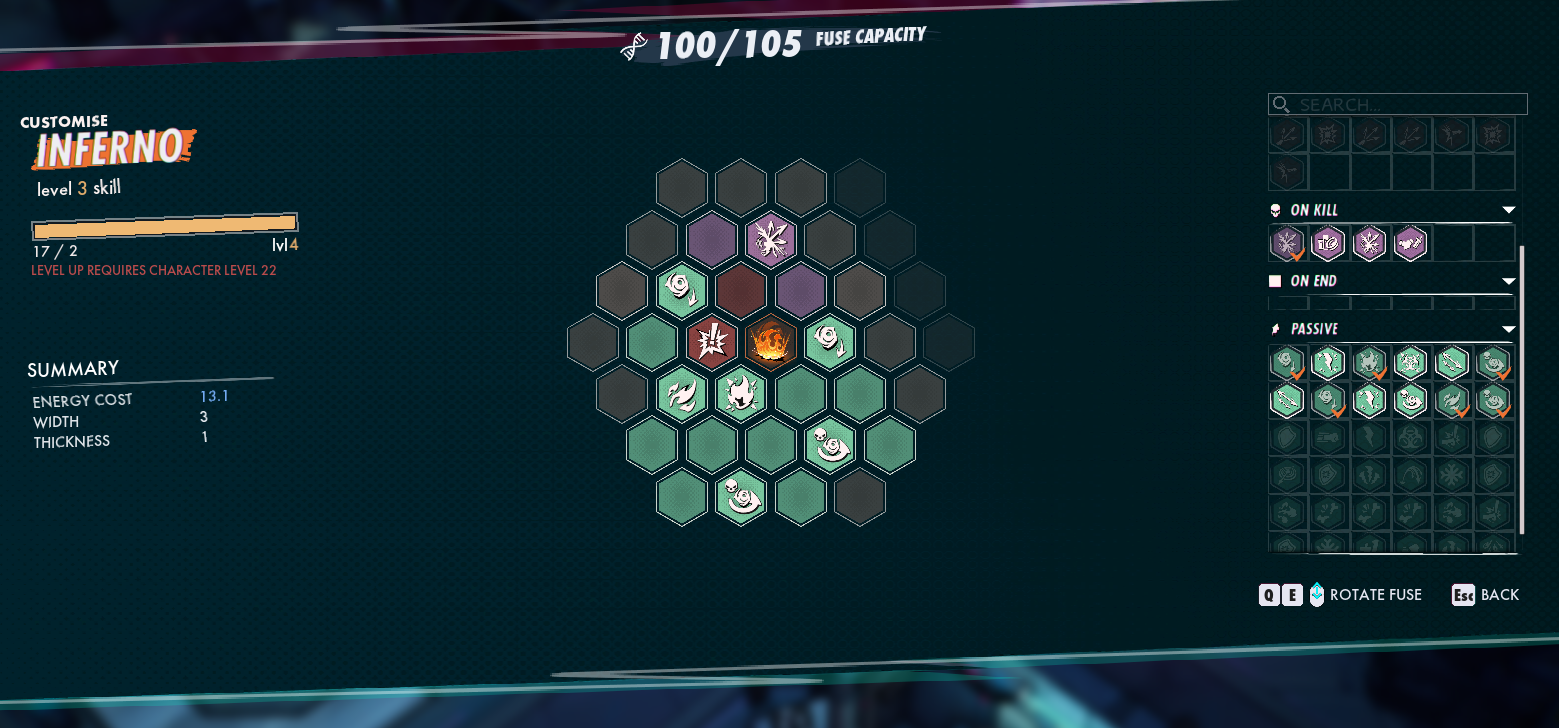Superfuse is a cel-shaded hack-and-slash action RPG from Raw Fury and Stitch Heads Entertainment. As you may have figured out from the game’s name, the fuse system is the main draw that sets it apart from other ARPGs. Players can fuse skills and tailor them to create some very interesting builds. We’re here to give you a rundown of how the fuse system works in Superfuse.
Before we get started, familiarize yourself with these three terms from the Superfuse Lexicon:
- Fuses: Fuses are added to your skills to customize and alter their properties in many different ways. These can be bought from vendors and dropped from enemies (they are green item drops).
- Fuse Capacity: Each fuse comes with a cost, and your capacity limits how many fuses you can add to your skills. You get more fuse capacity when you level up.
- Skill Leveling: Adding fuses to your skill levels it up and increases its power, but it also makes the skill cost more energy.
How Does the Fuse System Work in Superfuse?
Superfuse’s Fuse System allows you to customize your character’s skills. The system features a large hexagonal grid, where you can place fuses and combine them to modify the stats and behavior of a skill. Fuses can be obtained by defeating enemies, and they can also be purchased from vendors in Eros Town.
Each fuse you find comes with random stat ranges. For example, the Fork fuse, which splits attacks into multiple projectiles, can drop with 2 or 3 Split Amount. Each fuse also has a unique shape, so you may run into an issue where you cannot fit a specific fuse onto a skill without reorganizing the grid.

Lastly, each skill has its own fuse system, but your overall global Fuse Capacity limits the number of fuses you can equip to your skills. Depending on your level, you can choose to crank as many fuses as possible into a single skill or spread your fuses out between a few skills.

Types of Fuses in Superfuse
There are five categories of fuses that you can find and apply to skills:
- On Start
- On Hit
- On Kill
- On End
- Passive
On Start fuses, for instance, affect the skill when you cast it. Some examples of On Start fuses include:
- Fork: Projectiles split into multiple, and the damage is split equally between each split projectile.
- Slowdown: Slow down projectiles and increase their damage.
On Hit fuses affect the skill when it hits an enemy. A couple examples of On Hit fuses are:
- Knockback: Hitting an enemy with your skill will knock them back.
- Critical Hit Damage: Your critical hits deal more damage.
On Kill fuses affect the skill when an enemy is killed by the skill. A couple of examples of On Kill fuses are:
- Shatter: On kill, you have a chance to shatter your enemies, turning them into projectiles that hit more enemies.
Passive fuses are more general skill modifiers and can do things like lower a skill’s energy cost, add elemental damage, or restore energy on kill.
The heart of Superfuse is the fuse system that lets you customize your character’s skills. The thrill of the game lies in finding the best fuses and experimenting to discover some seriously overpowered builds to make your character unstoppable.
Visit our Superfuse Section for more guides and walkthroughs.





